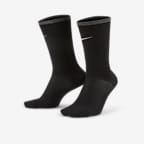
You may be wondering why this difference in foot strike pattern exists: according to research, modern running shoes offer our feet too much support. Increasing cadence has been linked with increasing pace and speed, reducing injury risk, and having a better running form altogether. This generates three times less impact, influences your running cadence, and can yield great benefits for distance runners. When you’re running in non conventional running shoes with very minimal impact on your foot landing, you will naturally strike the ground first with the balls of your feet. Heel striking isn’t necessarily a bad thing, but it does generate a much higher force as you land, which then spreads through the body and can generate injuries such as knee pain, stress fractures, or Achilles tendonitis. However, the biggest difference is how your foot strikes the ground.Īlmost any runner wearing a modern running shoe tends to strike the ground with their heel first, unless they’ve worked on their running gait specifically. So, what’s the difference between running in shoes and barefoot running? There will be clear differences in how much space your toes have to splay out and conform to a natural foot shape, the cushioning levels, and the amount of protection from the elements you will get with modern shoes. At the extreme end of the spectrum, we find the Tarahumara runners made famous by books such as Christopher McDougall’s “ Born to Run,” who wear sandals and loin cloths and don’t bother with any of the modern running paraphernalia, despite covering hundreds of miles with ease. There are a number of so-called minimal shoes, that reduce almost any interference with your natural foot strike pattern, providing no arch support or cushioning, which can qualify as barefoot running, too. The concept of barefoot running isn’t actually synonymous with not wearing running shoes, or any shoes at all, when you run.

The difference between running in shoes and barefoot running īenefits of running in minimalist and/or barefoot shoes

What is barefoot running and should you try it? There are certain aspects of minimalist running shoes and the motions of barefoot running that yield potential benefits to runners, as well as some drawbacks to be aware of. When it comes to running, there are arguments for and against in almost equal measure. While this theory suggests that human feet can feel healthier and stronger from running and walking shoeless, or at least in minimalist shoes that interfere the least with your gait, there could also be drawbacks. The concept of barefoot running is simple: you were born barefoot, so your body will respond better to less cushioning and freedom from the grip of modern shoes.


 0 kommentar(er)
0 kommentar(er)
